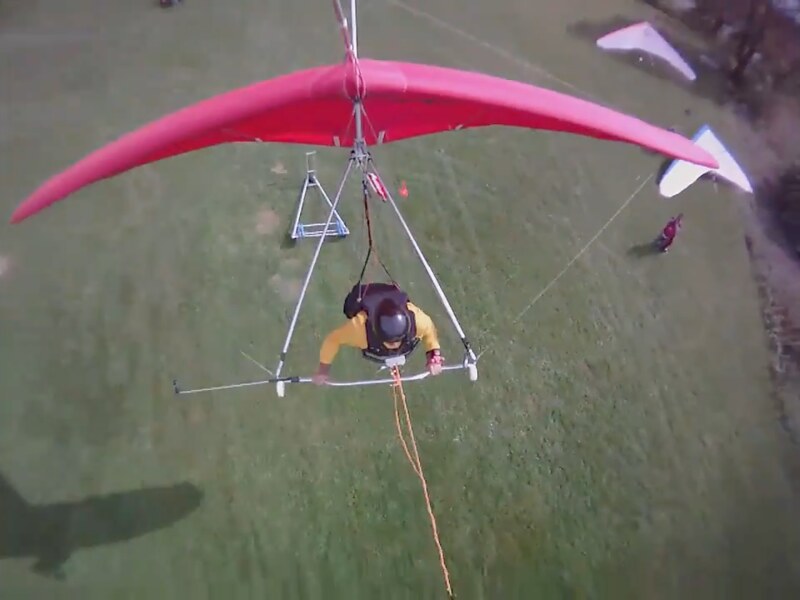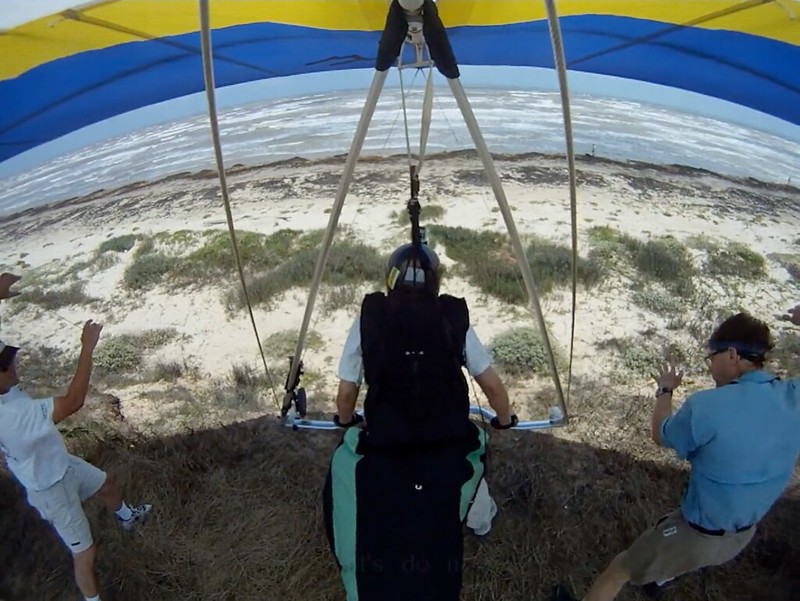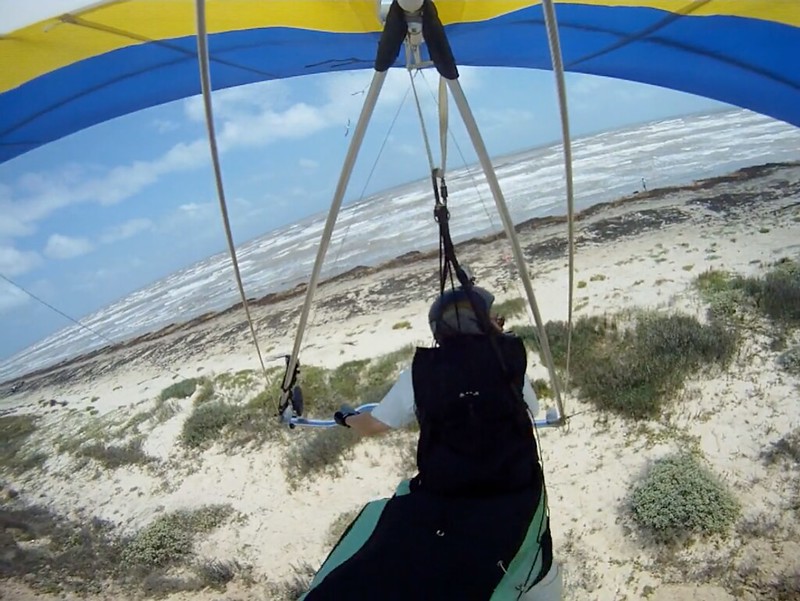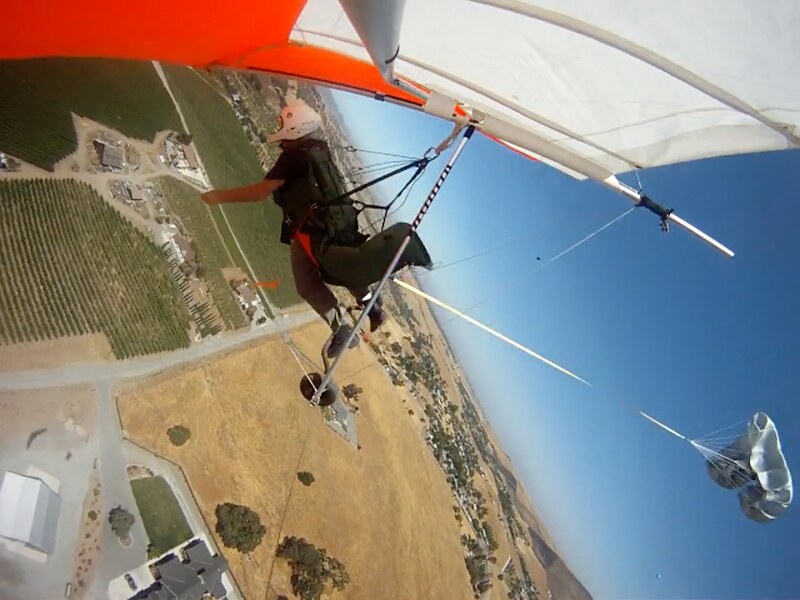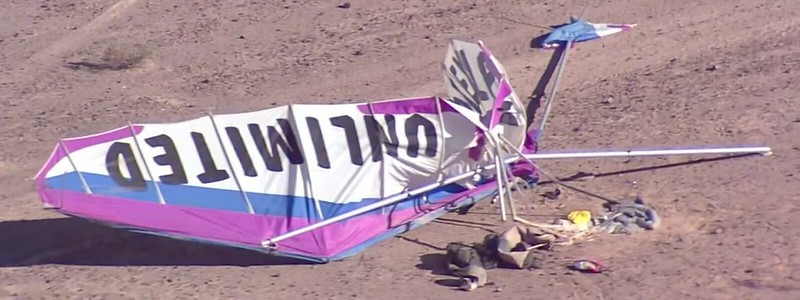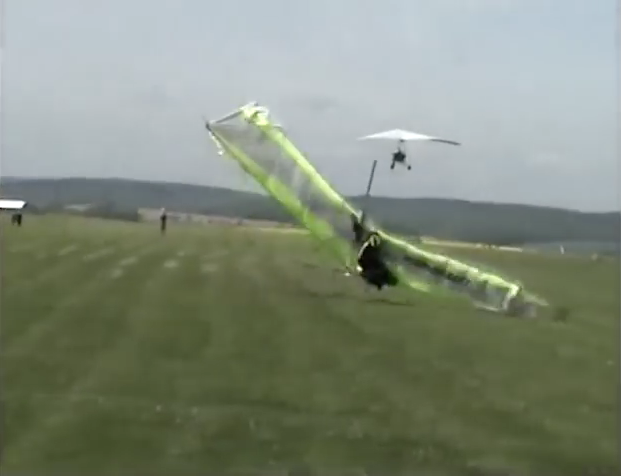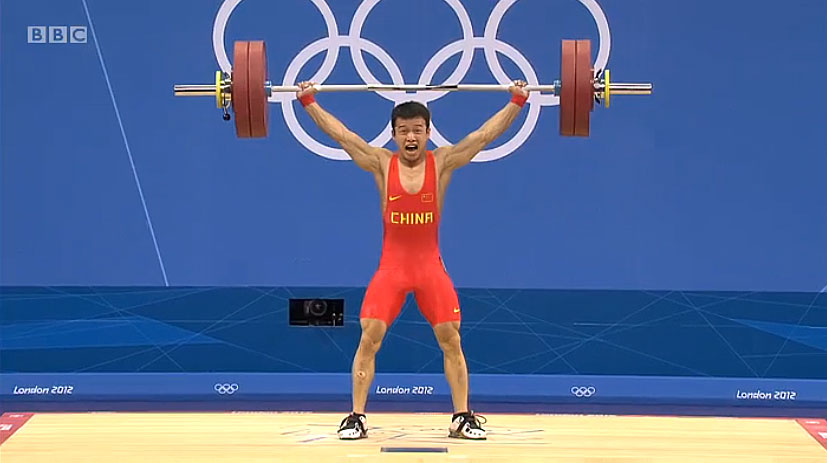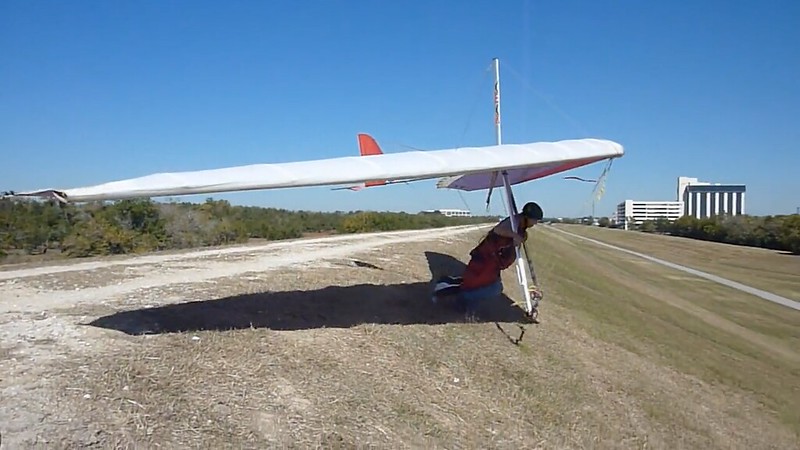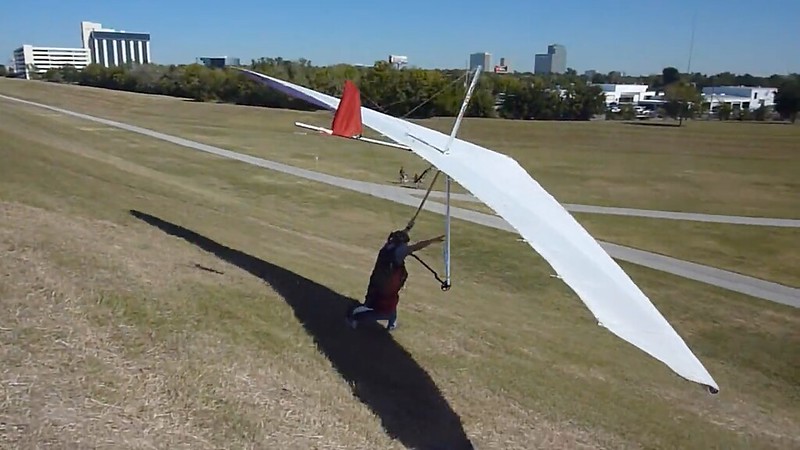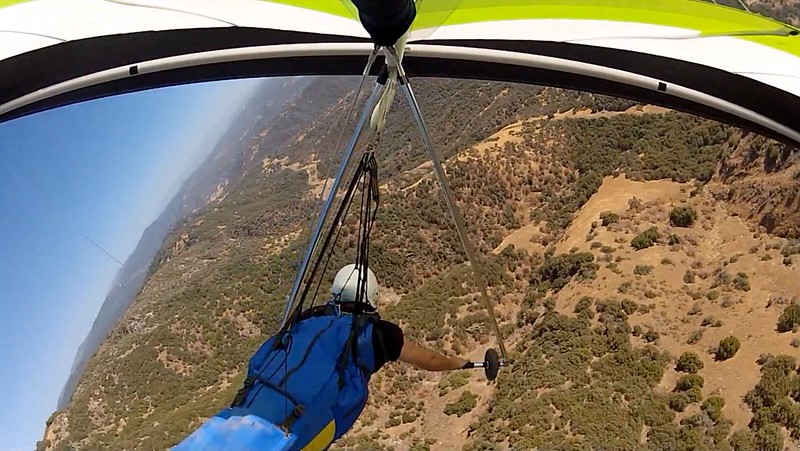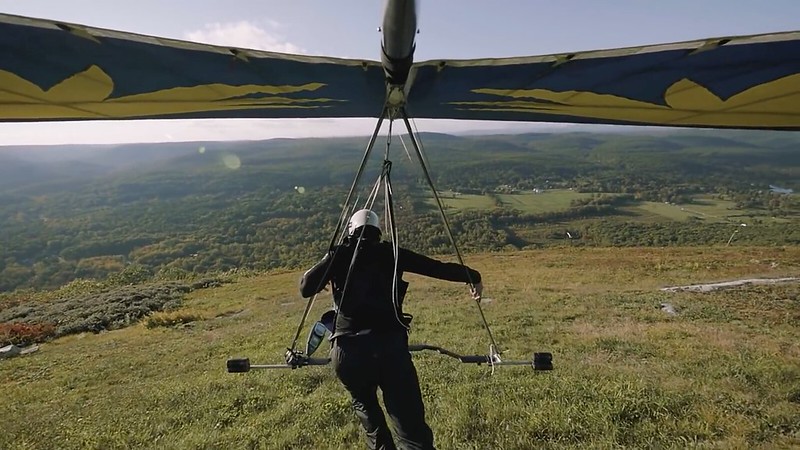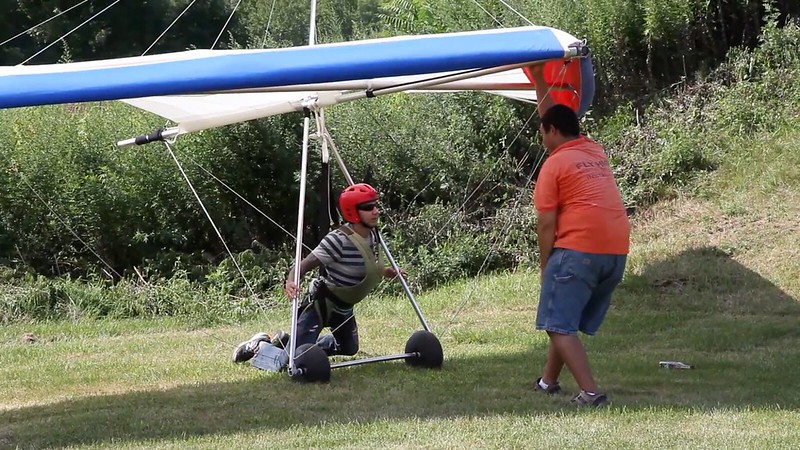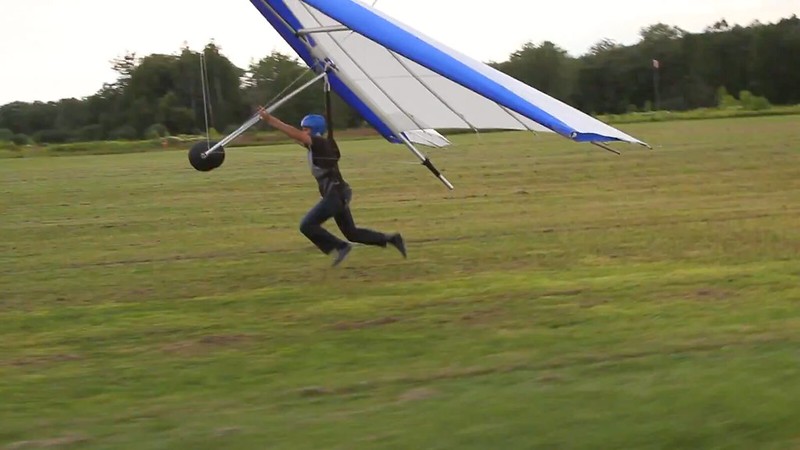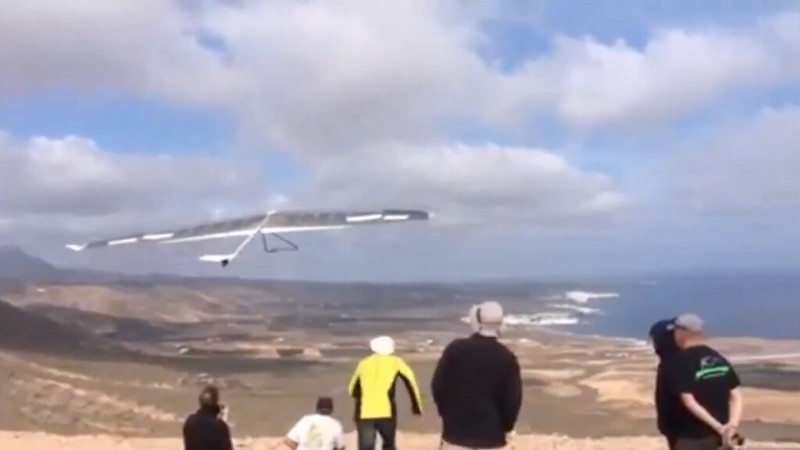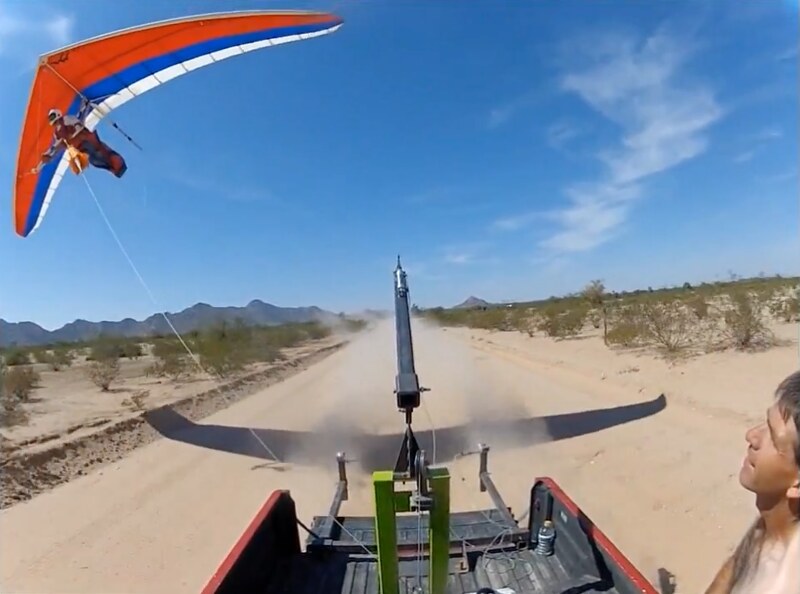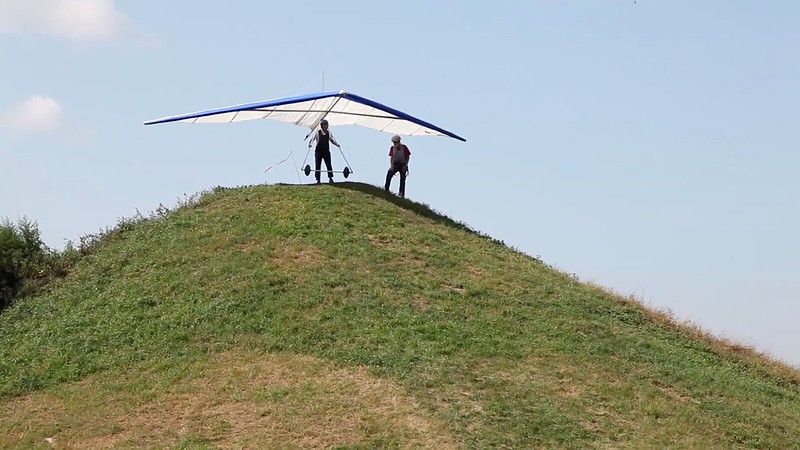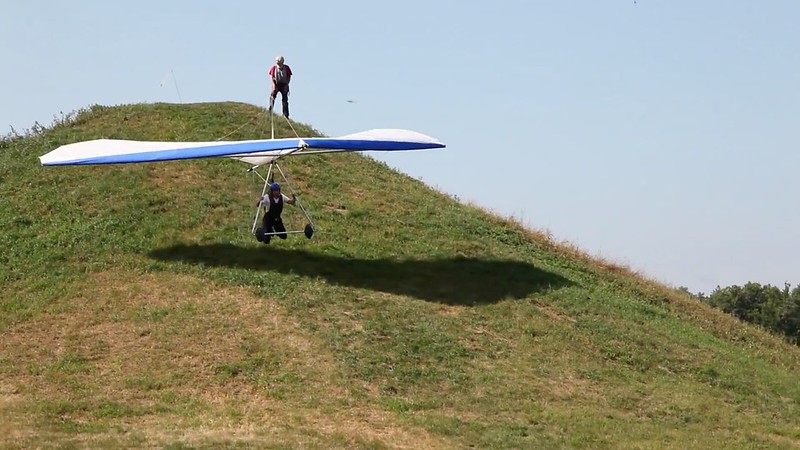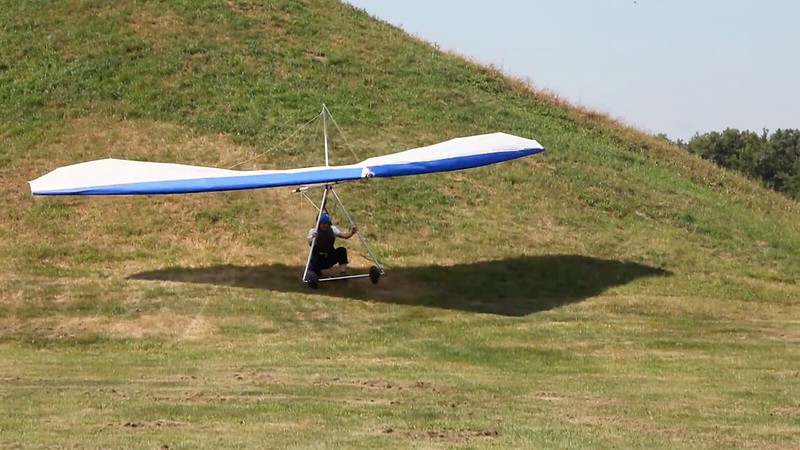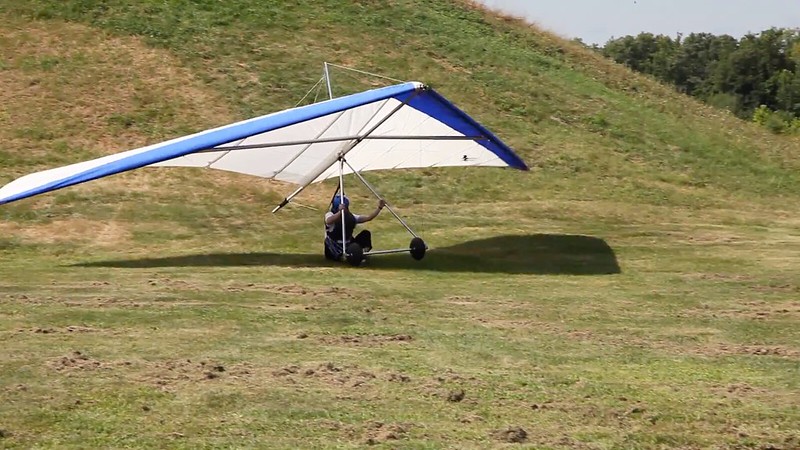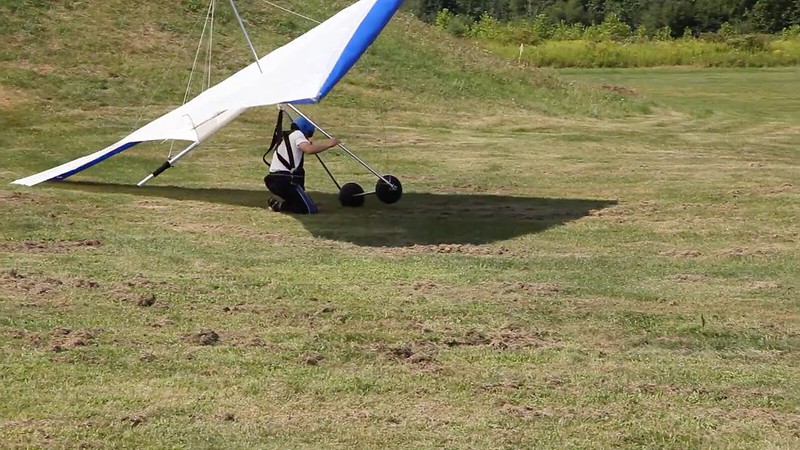"evidence of that silliness"
He has! At least four times already!Tormod Helgesen - 2016/04/22 09:16:19 UTC
Give up! For you own sake.Ryan Voight - 2016/04/21 19:06:19 UTC
And- I'll explain it in terms of physics and CG...
I think the problem is that your opponents believe that you need leverage to steer the hangglider.



You mean like when a Cessna flying level at a constant airspeed with five hundred pounds of thrust is opposed by five hundred pounds of drag?They can't grasp the fact that while airborne you're part of a closed system so that whatever force you use to move your body is opposed by an equal force.
Would it be OK to just fix the harness with me in it in a particular position with my hands on the bottombar...To produce any leverage (or torque) you'll have to fix the harness to the bottombar...
36-05024
http://c2.staticflickr.com/2/1597/25841366242_f8862848e6_o.png

53-15300
http://c2.staticflickr.com/2/1705/25333433883_7ec8c878e9_o.png
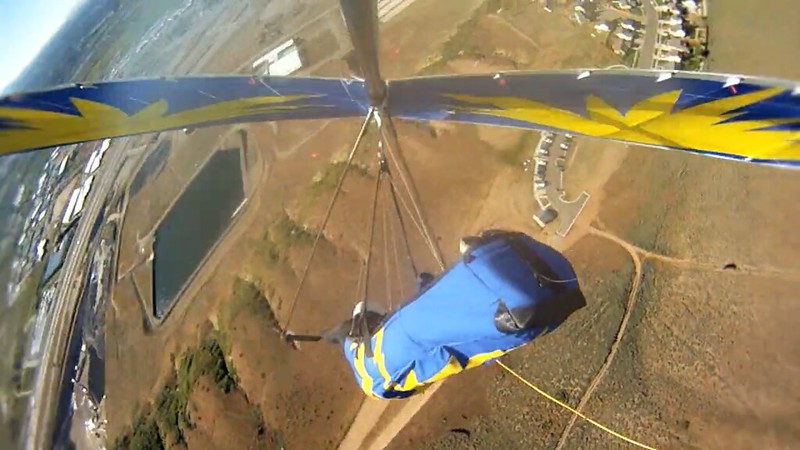
...for a time period of my choosing?
Why do we let people this astoundingly stupid out of secured institutions and into hang gliding?...and rotate your body inside the harness, mimicking an engine and propeller.
Go ahead, Tormod. Go for a world record on adding to confusion.To add to the confusion...
http://www.youtube.com/watch?v=uvhzoVC1UqM...someone is mixing in towing which is a totally different thing as it's a powered system.
Simple Progression for Teaching Hang Gliding
Ryan Voight - 2015/02/22
An excellent cue is to try to pull the glider through the air with the harness.
Donning-Kruger syndrome... Is that the one in which people think they can spell "Dunning" but can't?I think you've encountered a unsolvable case of the Donning-Kruger syndrome as your opponents simply refuses to educate themselves.
(Had to look that one up yesterday morning. Then in the early afternoon I heard an hour long NPR program discussion to the Dunning-Kruger Syndrome with David Dunning. Mini mind blower.)
Yeah ya are.Mike Lake - 2016/04/22 09:48:28 UTC
I'm no one's opponent.
Great. There's no argument here.I'm not after an argument.
Because there's no 250 pound Infallible Weak Link between the hang point and your harness straps to increase the safety of the free flying operation the way there is between the harness and the twenty foot piece of rope to increase the safety of the towing operation.How is running pulling a glider by the hang point with your harness straps any different from running pulling a glider by the hang point with a 20 foot piece of rope?To add to the confusion someone is mixing in towing which is a totally different thing as it's a powered system.
How is that not adding to the confusion on The Jack Show - on which a bridle distributing towline tension (or "pressure") equally between the pilot and glider is a three point?I'm not adding to the confusion just stating a fact that the dynamics of towing come into play when you are on there ground.
Would "pushing" be OK?Call it something else if you like.
Keep rubbing people the wrong way - motherfucker - and you'll soon find yourself logging hours at the tow park Tad runs.Instead of dismissing my post as irrelevant because I mention towing, try picking apart what I have said bit by bit and tell me how it is not connected with how the glider behaves when on the ground.
And expecting different results?I'm listening.
Bullshit. It WILL cause a roll - IN THE OPPOSITE DIRECTION. Remember the bit about for every action there being an EQUAL and OPPOSITE REaction?Erik Boehm - 2016/04/22 15:02:39 UTC
No you haven't, the force is still being transmitted to the exact same location, through the hangstrap to the center of the wing. There is now a lateral component to the force, but there is no difference in the vertical component that would cause a roll.Ryan Voight - 2016/04/21 19:06:19 UTC
...you've moved the 10 lbs of your weight the glider is lifting, relative to the center of lift of the wing- which remains unchanged.
Shut up, Erik. You're operating way above your pay grade now.At best the lateral component will result in a bit of "side slip" , and the glider will yaw into the relative wind, but that would take quite a lot of lateral force...
I feel like you're going to be using finger paints when you do.I feel like I'm going to have to start making paint diagrams here.....
Nope. (P.S. Peter had a chance to get back to ya yet?)2016/04/22 16:47:52 UTC - 3 thumbs up - NMERider
Ever hear of WIND, dickhead?Tormod Helgesen - 2016/04/22 17:38:50 UTC
pud: 2 comments.
Unless you're superman, the 0,7 horsepower å human is capable of generating cannot be described as towing, in fact, when you reach flying speed most of us are barely able to keep up with the glider.
I've measured the towline tension (pressure) between my HPAT 158 and a 115 horsepower 914 Dragonfly with the turbocharger kicked in at 155 pounds (per square inch). Think any of us are capable of taking a 155 pound strain with our heels dug in?
125 pounds without the turbocharger and Jim Keen-Intellect Rooney assures us that's enough to tear our wings off without the protection of a Rooney Link.
How much tension are you thinking it would take to put a glider into a gentle climb and/or a fatal lockout?
Oh good. Maybe YOU will have time to get a video clip of yourself doing that hands off.Whenever I get a wing lifted during launch I lean/run towards the LIFTED wing! The oposite of what you are telling me to do but it works and I haven't crashed in a long time.
Oh good. Maybe you'll be able to write the theory that explains your experience so's we can teach our students Helgesen Theory rather than Helgesen Experience. Dickhead.My experience trumps your theory.
Idiot fuckin' Mike Robertson product.2016/04/22 18:25:45 UTC - 3 thumbs up - Don Arsenault
Not on The Jack Show.Brian Scharp - 2016/04/22 17:49:45 UTC
Wouldn't the glider's response to the vector change actually be a roll in the opposite direction?Erik Boehm - 2016/04/22 15:02:39 UTC
There is now a lateral component to the force, but there is no difference in the vertical component that would cause a roll.
Great Don! We can use all the no-hands video we can get.Don Arsenault - 2016/04/22 18:26:27 UTC
Yep. Exactly what I do also.Tormod Helgesen - 2016/04/22 17:38:50 UTC
Whenever I get a wing lifted...
051-20014Eric Hinrichs - 2016/04/22 19:23:20 UTC
Ok, I'm going to throw something else out there:
Can you affect pitch while your feet are on the ground and you're not touching the control frame?
http://c2.staticflickr.com/2/1483/26349644531_e0bbe6fd69_o.png
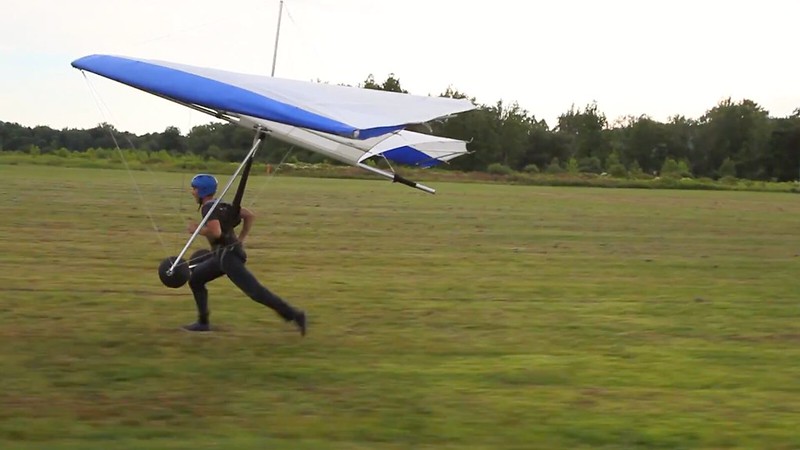
Over a fairly limited range. Slower run / Lighter wind, you're gonna be roll unstable and not likely to keep things going long. As your running/wind/air speed / suspension tension increases you pitch up / increase lift and that will translate to a loss of traction. An auto limiting situation.
Yet another video source. (Thanks bigtime, Erik. And again thanks bigtime for teaching your students the same unhooked launch protection strategy you use for yourself.)Eric Hinrichs - 2016/04/22 19:26:20 UTC
DittoTormod Helgesen - 2016/04/22 17:38:50 UTC
Whenever I get a wing lifted...
Brian Scharp - 2016/04/22 19:46:08 UTC
Yes.Eric Hinrichs - 2016/04/22 19:23:20 UTC
Can you affect pitch...
Mike Lake - 2016/04/22 19:49:58 UTC
What else is it if it's not towing? If the word bothers you I'll use something else. Splunging is as good a word as any.Tormod Helgesen - 2016/04/22 17:38:50 UTC
pod: 2 comments...
This has nothing to do with horsepower. In a breeze a man just has to hold onto a rope, not too much horsepower involved there.
It has to do with the fact the glider cannot do what it wants to do because of a 200lb tether - namely the pilot.
If the glider banks but can't go where it naturally wants to go because of a tether then we are talking towing dynamics. If the pilot's feet have left the ground or are hardly touching then we are not.
I'm not telling you to do anything and I assume your crash free takeoffs don't involve you running down a hill hands off. As a responsible pilot you will be holding the control frame and supplying input.
Sadly I can't say I have not crashed in a long time but that was a landing so it doesn't count.
Brian Scharp - 2016/04/22 20:09:27 UTC
That's the definition of claim.Ryan Voight - 2016/04/21 20:53:49 UTC
Check your sentence structure and wording- I don't claim to teach this to students... I do, and when they do it, it works.
state or assert that something is the case, typically without providing evidence or proof.
And, by mine, not a responsible instructor.Eric Hinrichs - 2016/04/22 21:09:38 UTC
By your definition, I'm not a responsible pilot.Mike Lake - 2016/04/22 19:49:58 UTC
As a responsible pilot you will be holding the control frame and supplying input.
If you're exerting force on the glider through the suspension and/or your hands you're supplying input.I have several hundred launches that I'm not holding the control frame, but I feel that I am still supplying input.
You CANNOT control ROLL for a positive outcome without effecting force through your hands.Of course I'm only going to do that in conditions so that I can move my body with my feet fast enough to control it.
Because you're NOT SHIFTING WEIGHT such that one wing is more heavily loaded while the other is proportionally less loaded. You're altering the strength and direction of what the glider perceives as gravity and it will trim accordingly with wings equally loaded. Same as if you put a short loop on the hook of an umbrella handle and pull it sideways - or any other direction you choose - it will roll the other way and the attitude will be a resultant of your pull and any wind and/or running generated airspeed. And if you go nuts it will fail SYMMETRICALLY.It's a weight shift aircraft, if we pull the weight to the right place with our feet on the ground, or our hands on the bar, I don't see how it should matter?
Maybe. Depends on how one is defining "naturally".The first paragraph says the glider can't go where it naturally wants because of the towing dynamic, but doesn't the second contradict by saying there's no way to supply input without touching the control frame?
- If you tie one end of a rope to the hang strap and the other to a fence post, walk away, and wait for the wind to pick up to twelve miles per hour and fly the glider that would be one hundred percent naturally. If you hooked in in dead air and ran the glider up to twelve miles per hour hands off that would be zero percent naturally but the effect on the glider would be identical.
- Force exerted on anything on the glider below the wing through the hands is always one hundred percent unnatural.
Where are your hands just prior to impact and why are they where they are?...and yes, as you, I'm not counting landing crashes
Donnell Hewett's Skyting "Theory"... The worse it gets the better it's gonna correct.Mike Lake - 2016/04/23 01:44:07 UTC
I'm sure you are a responsible pilot.
It depends on if you agree that towing a glider by the hang straps is towing or something else (splunging?). I say it's towing and frankly I don't see how anyone can argue otherwise, but I'm not surprised they do.It's a weight shift aircraft, if we pull the weight to the right place with our feet on the ground, or our hands on the bar, I don't see how it should matter?
If you don't agree (it's towing) please explain the difference between a flexible hang strap and a rope.
If you do agree then you must accept that, like it or not, towing dynamics come into play and it matters not if the glider is a few feet off the ground being towed by a hang strap or a hundred feet in the air being towed by a rope.
If misalignment of tow forces are autocorrecting, this being the only conclusion if even more misalignment is said to correct misalignment...
Proof. So we just need a Reliable Release within easy reach....then what we have is a glider that is lockout resistant.
I think I've got the typical hang glider "pilot" "mind" mapped out pretty well at this point. I can predict pretty well what (s)he's gonna do and say and why.Now if this is the case then perhaps I should abandon my quest for an anti-lockout device along with my perpetual motion machine and a complete study of the workings of the female mind.
Exactly as Ryan clearly stated in his instructional video.Eric Hinrichs - 2016/04/23 02:52:14 UTC
Yes, of course I agree that we are towing, the first thing my instructor taught me was to "float and tow" running on the flats.
We can OBVIOUSLY turn the glider by running with our feet on the ground and not touching the glider. We've got scores of people doing it all the fuckin' time. We just haven't been able to figure out how to get it on video to date.I'm misunderstanding if this discussion is about autocorrection, I thought the main debate is if we can correct, level, and turn the glider by running with our feet on the ground and not touching the glider, or if you need to apply torque to the control frame to correct or initiate any roll?
...and good luck on that last quest pod! Keep me updated...

No it's not - unless the winch is on a truck and the runway is "infinitely" wide or on a boat where runway width is pretty much never an issue. Nancy was being towed on a system that only allowed a pull in one direction.Erik Boehm - 2016/04/23 07:43:47 UTC
And here is where it gets weird...I thought the main debate is if we can correct, level, and turn the glider by running with our feet on the ground and not touching the glider, or if you need to apply torque to the control frame to correct or initiate any roll?
Without hands on the control bar, controlling by how much you run and where you run is like trying to control a glider by a winch...
This is a seamless continuation of the towing fatality thread. (Thanks bigtime, Pat, for all your insightful contributions to it.)...which is exactly what people were arguing you can't do and shouldn't try to do in the towing fatality thread.
We're fine on both pitch and yaw. Our gliders have shit in the way of roll stability - times ten on tow.But some of those same people basically now saw it works if you get rid of the winch....
You can do hands free launches... certainly... but I'd argue that relies on passive stability of the glider as far as roll, yaw, and pitch are concerned.
This "closed loop/system" bullshit was introduced by Ryan - 2016/04/15 13:28:18 UTC - who's totally fuckin' clueless on the issue of glider control and has been lying about what he can do on the ground and is now lying in a pathetic effort to cover up the lies he was telling us before. Drop it. It's totally bogus.By exerting force only through a strap going directly to the CoM, you only apply lateral forces/acceleration to the glider - no roll pitch or yaw.
There is a physics difference between the "closed loop" of forces when you weight shift while in the air, exerting forces on the control bar - and the "open loop" where you move your body to a side by exerting forces on the ground.
2016/04/23 14:39:48 UTC - 3 thumbs up - NMERider
No. And this asshole gets pulled up under tow pressure.Mike Lake - 2016/04/23 08:38:37 UTC
Indeed Erik. Explained much better than my attempts.
You CANNOT affect/effect pitch CONTROL the way you're meaning and thinking. For launch one HOLDS/TORQUES the nose DOWN and accelerates forward with his run. Without that torque pulling forward on a strap anchored at the wing's center of lift the nose pitches UP - the opposite of the pull, same as with roll - and impedes your ability to accelerate. And we start seeing a lot more nasty and fatal crashes on launch.Eric Hinrichs - 2016/04/23 14:50:50 UTC
But Erik, I thought you said that yaw could possibly be exerted, and Brian agrees with me that I can affect pitch by towing the glider with feet on the ground?Erik Boehm - 2016/04/23 07:43:47 UTC
And here is where it gets weird...
You can do hands free launches... certainly... but I'd argue that relies on passive stability of the glider as far as roll, yaw, and pitch are concerned.
By exerting force only through a strap going directly to the CoM, you only apply lateral forces/acceleration to the glider - no roll pitch or yaw.
How unfortunate - 'cause Erik is mostly clueless.I understand what you guys are saying...
Yet still thinks that a towline transmits pressure to he glider....and I know Erik has a lot more of that other kind of higher education than me...
All you can do in the way of influencing the glider to do something you want it to without touching the CONTROL frame is run it FASTER in the direction you and it started out 'cause never once in the history of aviation has it been a good idea to slow down after commencement of takeoff....but still feel I can influence the glider not touching the control frame with my feet on the ground.
I don't know or care what the fuck he's saying. It gives me a headache to try to decipher the babblings of assholes who don't have fuckin' clues what they're talking about. So I'll just say that if you're being towed behind a truck it will be doing all of the above. It's providing the glider a thrust and gravity vectors and that's how the glider feels and reacts to it.So you're saying if a pilot was being towed behind a truck, that truck will exert no pitch, roll, or yaw influence on the glider by changing speed or driving sideways?
- The forward pull vector will pitch the glider up, make it trim nose high and the glider will "weigh more" so it will fly faster.
- The glider will yaw straight towards the truck in a headwind just as it will want to if you're holding it level in a strong crosswind on the ground - because of sweep. In a crosswind the glider will proportionally split the difference between where the truck's pulling it and the wind's pushing and fly at a crab angle. And if you argue with the glider and move it back to straight behind the truck - the way John Woiwode did - you'll be flying the glider towards and maybe into a lockout.
- If the glider gets into a roll for any reason - pilot putting lateral TORQUE on the bar, thermal turbulence, truck heading change - the glider will roll AWAY from the towline. The only way for you to correct this - behind the truck or during a launch run - is to TORQUE the control frame from the high side / to the low side the way this student of Ryan's:
069-25104
http://c2.staticflickr.com/2/1572/26142964830_289bc3f2cb_o.png
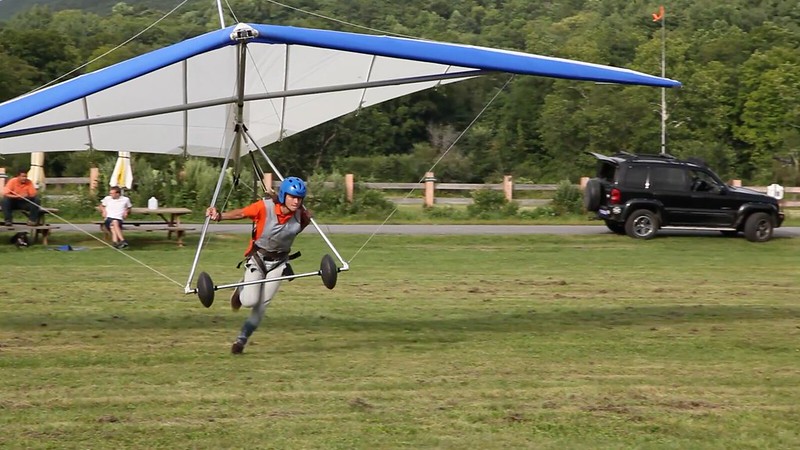
isn't doing. HOWEVER, unlike the foot launching pilot, the truck COULD, given the time altitude, and maneuvering latitude unavailable to the foot launcher, haul ass to the wrong/low side of the glider and roll him back to level while the pilot's doing the same thing by torqueing the bar. In real life this will never happen 'cause the scale is too large, the runway's always gonna be too narrow, and the pilot will have either been able to immediately effect the correction or been locked out.
In aerotowing, on the other hand, short towline, unlimited maneuvering space... Any halfway competent tug driver will ease up on power and change heading to the wrong/low side and mitigate the problem the glider's having. This is what Bobby Fucking-Genius Bailey was doing for Robin Strid seconds before he was locked out and killed by Bobby Fucking-Genius Bailey's "tow equipment".
HOW? Grabbing the wires instead maybe?I was flying no hands at Westlake perfectly stable and was able to move my body without touching the control frame...
That would work. But the polar opposite of what the no-hander foot weight shifters are predicting. What they'd be doing is still just transmitting a vector to the hang point....and the glider went into a turn.
So, in a fantasy situation, if I had two friends flying on either side of me with a string tied to my hip, they could pull me side to side and my glider would continue flying straight?
It is - and can't.That seems to be what you're saying, but it still doesn't make sense to me.
We did something "similar" at the Kitty Hawk Kites glider ride factory all the fuckin' time in blown out conditions. We ran tethers to the nose and leading edge / cross spar junctions. You know what the nose tether did and the wing tether's functioned as extremely efficient sidewires transmitting asymmetrical tension as needed.
History is being made on this thread. What we're doing is majorly reversing 35 years of damage of Skyting Theory insanity. (First Skyting article published 1980/04.) Infallible Weak Link bit the dust hard in early 2013 and the autocorrecting "Center Of Mass Bridle" is getting chopped to pieces in the post Nancy firefights. Same team smashing through hang gliding ISIS lines and defenses on both campaigns. Don't hold back on the artillery barrages and don't take any prisoners. We finally got these motherfuckers right where we want them.

